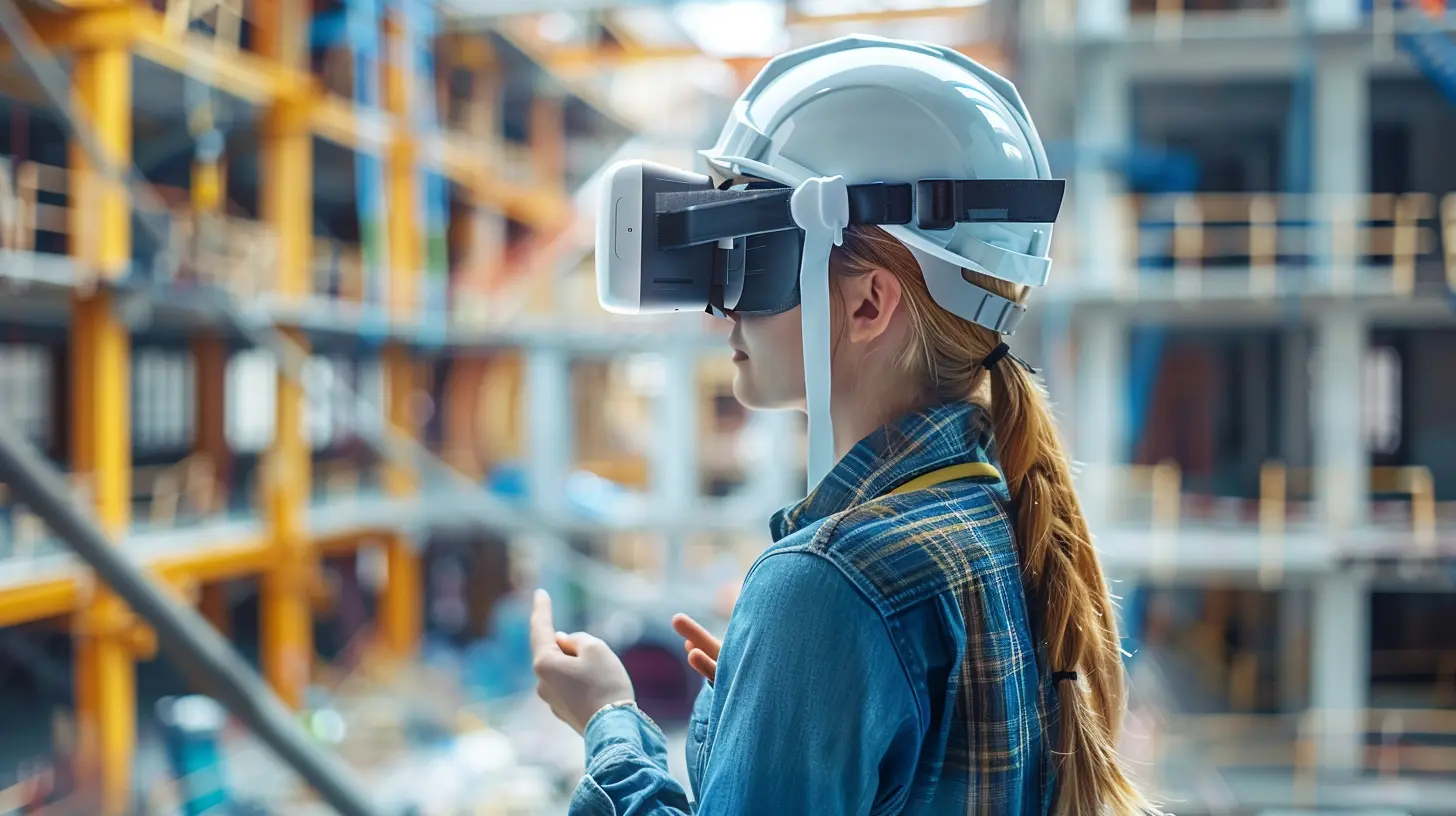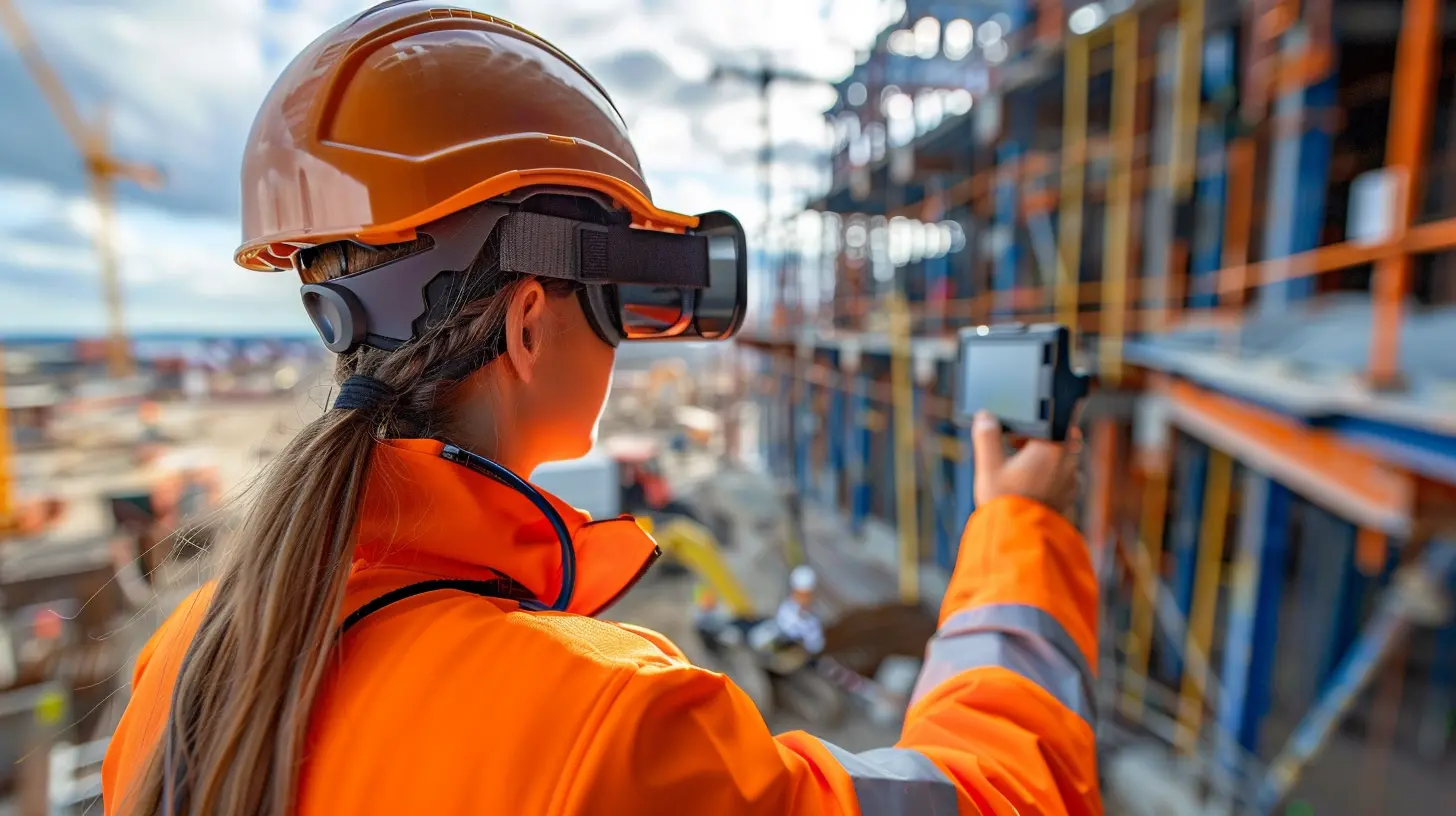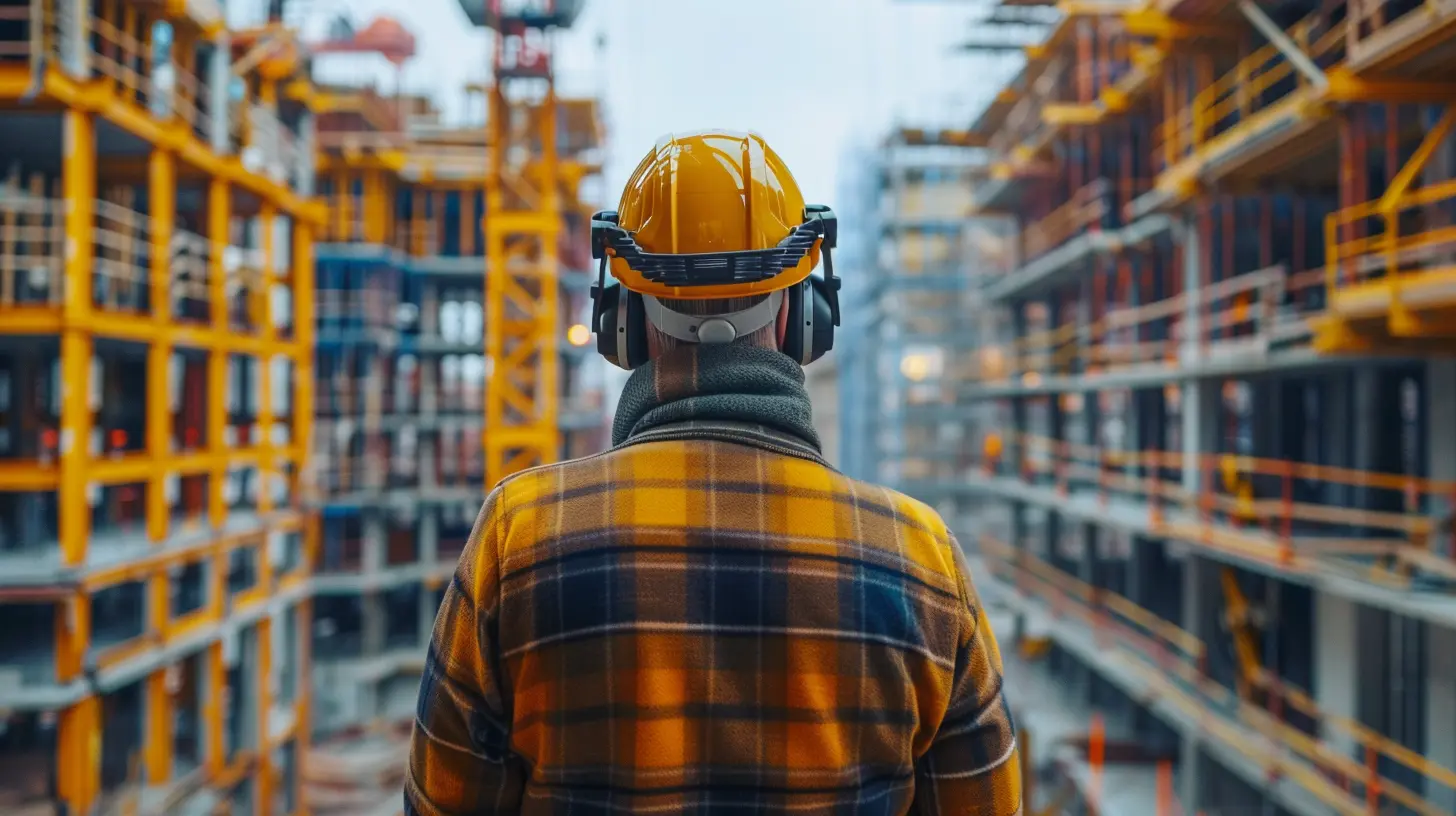How AR is Enhancing Construction Site Safety and Efficiency
16 July 2025
Technology is changing the world around us—fast. One of the most exciting game-changers in recent years? Augmented Reality (AR). It’s not just for video games or social media filters anymore. AR is stepping onto construction sites around the globe, hard hat and all, transforming the way we build things. From boosting safety to improving efficiency, AR is quickly turning into a must-have tool for construction pros. So, how exactly is AR reshaping the construction industry? Let’s break it down.
What is AR, Really?
Before we dive into the nitty-gritty, let's make sure we're on the same page. AR, or Augmented Reality, overlays digital information—think images, data, or 3D models—onto the real world. Unlike Virtual Reality (VR), which puts you in an entirely virtual environment, AR blends digital content with your actual surroundings using devices like tablets, AR glasses, or even smartphones.Picture this: you're looking at a construction site, and you can see an overlaid 3D structure showing what the final building will look like. Pretty cool, right?
Now, let’s get into how this futuristic tech is making construction safer and more efficient.
Construction Safety: A Constant Challenge
Let’s be real—construction sites can be dangerous. With heavy machinery, dizzying heights, and a constant buzz of activity, it’s no wonder safety is a top concern. According to OSHA, one in five worker deaths in the U.S. occurs in construction. That’s a pretty sobering stat.So, how does AR help fix that?
1. Hazard Visualization Before the First Brick is Laid
One of the biggest benefits of AR is its ability to visualize potential hazards before they become real problems. Imagine walking through a digital version of a construction site before it's even built, spotting risks along the way—like unstable structures, utility lines, or dangerous equipment placements.Contractors can use AR to literally “see” what a job site will look like once construction is underway. This preview allows for smarter planning and better risk management, long before workers even step on-site.
2. Real-Time Safety Guidance
Here’s where things get really next-level. AR-powered wearables like smart glasses can give workers real-time safety instructions as they go about their tasks.Think of it like a GPS for construction—a digital guide that keeps employees on the safest path. Workers can get alerts about hazardous zones, proper usage of equipment, or even reminders to wear their protective gear. No flipping through paper manuals or trying to remember a safety briefing from last week—everything is right in front of their eyes.
3. Better Training, Less Risk
Remember those awkward training videos from the 90s? Yeah, we’ve moved on. AR is changing how workers are trained—making it more interactive, immersive, and (most importantly) safer.New employees can go through simulated training environments powered by AR where they learn procedures, safety protocols, and how to use equipment without putting themselves—or others—at risk. It’s “learning by doing,” but without the danger. And guess what? It sticks better, too.
Construction Efficiency: Doing More with Less
Safety’s only half the puzzle. The other side? Efficiency. Let’s face it—construction projects are often plagued with delays, miscommunication, and ballooning costs. But AR has a solution for that as well.4. Precise On-Site Measurements
Construction is a business of inches, sometimes millimeters. A small miscalculation? It can throw an entire project off track. AR offers real-time, super-accurate measurements that are way better than traditional methods.Using AR-enabled devices, workers can scan surfaces, spaces, or even piping systems and instantly get measurements displayed right in their line of sight. No need for tape measures or second-guessing. That means less time fixing mistakes and more time making progress.
5. 3D Modeling and On-Site Visualization
If a picture is worth a thousand words, a full-scale 3D building model might be worth a million. With AR, project managers can walk through a construction site and see exactly how pieces of the puzzle will come together.Need to understand how a beam will fit into place? Just point your AR lens at the spot, and boom—there’s your virtual beam. Want to review the plumbing layout without tearing up the floor? AR’s got your back. These visual aids drastically reduce misunderstandings and keep everyone on the same page. Literally.
6. Real-Time Collaboration with Remote Teams
Construction isn’t a solo act. Architects, engineers, site managers, and clients all need to be in sync. But with teams often scattered across different locations, communication can be a nightmare.Here’s where AR steps up. With AR-powered remote collaboration tools, experts can view the live site from afar, mark up visuals, and provide input in real-time. Imagine an engineer halfway across the world guiding a site worker with AR annotations on their screen. Time zones? Delays? Miscommunications? AR makes those things a lot less scary.
7. Faster Error Detection
Let’s say there’s a misalignment in the steel framework or a missing duct in the ceiling. Traditionally, someone might not catch it until it’s too late—and fixing it could mean costly rework.AR helps spot these issues before they become problems. By comparing the digital model with the physical build in real-time, AR can alert workers to discrepancies immediately. That means faster fixes, lower costs, and far fewer headaches.
8. Digital Workflows for Increased Productivity
Paper blueprints? Old-school. Manual checklists? Inefficient. AR integrates digital workflows seamlessly, allowing workers to access schedules, checklists, and updates directly through their AR device.Need to report a finished task or log an inspection? It’s all just a tap or a voice command away. This not only speeds things up but also keeps a digital record of every move—handy for audits or quality assurance.
The Gear That’s Powering the Revolution
All of this sounds amazing, but what kind of gear makes it happen?- AR Glasses & Headsets: Like Microsoft HoloLens or Magic Leap, these wearable devices overlay data onto workers’ field of vision.
- Tablets & Smartphones: Portable, flexible, and more common, these gadgets are great for site supervisors and contractors.
- AR-enabled Software: Platforms like Trimble SiteVision, XYZ Reality, and DAQRI are leading the charge in AR development for construction.
You don’t need to go full Iron Man to make use of AR—chances are, your smartphone already has enough power to get started.
Real-World Success Stories
Still wondering if AR in construction is more hype than help? Let’s look at some examples:- Mortenson Construction used AR to detect errors in their installations and reduced rework by up to 70%. That’s a boatload of saved time and money.
- BIM 360 and AR Integration allowed Skanska to integrate Building Information Modeling with AR to improve real-time decision-making on job sites.
- Gensler, an architecture firm, uses AR to communicate design concepts to clients and contractors, helping to eliminate guesswork.
These use cases are just scratching the surface. More and more companies are dipping their toes (or diving head-first) into AR, and the results are hard to ignore.
Challenges to Watch Out For
Of course, AR isn’t a magic wand. Introducing any new tech comes with its own set of challenges.- High Upfront Costs: Cutting-edge devices and software can be pricey.
- Learning Curve: Not everyone’s a tech whiz. Training employees to use AR effectively takes some time.
- Connectivity Needs: Many AR tools rely on cloud access, which isn’t always available on remote job sites.
But don’t worry—these bumps in the road are pretty common with any new innovation. As tech matures and becomes more affordable, these challenges will shrink.
The Future of AR in Construction
So, where’s this all going? Well, we’re just scratching the surface. In the near future, expect to see AR combined with other tech trends like Artificial Intelligence (AI), 5G, IoT (Internet of Things), and even robotics. Imagine AR helmets that collect data from connected tools and give real-time feedback or drones equipped with AR cameras providing a bird’s-eye view of the construction progress.Pretty wild, right?
Final Thoughts
AR is no longer “the future” of construction—it’s happening now. From making job sites safer to streamlining complex processes, AR is proving to be more than just a flashy gadget. It’s quickly becoming an essential tool in every contractor’s toolkit.Whether you're a project manager trying to hit deadlines, a safety officer striving to reduce risks, or a worker looking to make your job a little easier, there’s probably an AR tool that can help. And the best part? We’re only just beginning.
So, the next time you step onto a construction site, don’t be surprised if you’re greeted not just by blueprints and steel beams—but by digital overlays, guided instructions, and a new way of building from the ground up.
all images in this post were generated using AI tools
Category:
Augmented RealityAuthor:

Ugo Coleman
Discussion
rate this article
2 comments
Henrietta West
AR technology revolutionizes construction by improving safety protocols and streamlining workflows, ultimately enhancing overall site efficiency.
November 13, 2025 at 12:34 PM

Ugo Coleman
Thank you! I'm glad you found the article insightful. AR indeed plays a crucial role in transforming construction safety and efficiency.
Lindsey Cook
Great article! It's fascinating to see how AR is transforming construction. Enhancing safety and efficiency not only protects workers but also streamlines projects. Excited to see how this technology evolves and shapes the industry in the future!
July 23, 2025 at 3:21 AM

Ugo Coleman
Thank you! I'm glad you enjoyed the article. The potential of AR in construction is indeed exciting, and I'm looking forward to seeing its continued impact on safety and efficiency!


